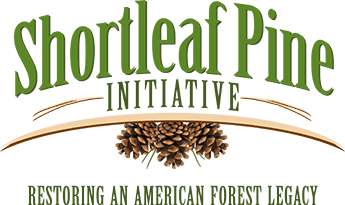|
Shortleaf research, newspaper articles, fact sheets, conference proceedings, literature reviews, and brochures.
Thinning Estimation of Reineke and Volume-Based Maximum Size-Density Lines For Shortleaf Pine
Estimation of Reineke and Volume-Based Maximum Size-Density Lines For Shortleaf Pine
Lynch, T. B., Wittwer, R. F., & Stevenson, D. J. (2004). Estimation of Reineke and Volume-Based Maximum Size-Density Lines For Shortleaf Pine. Southern Research Station, General Technical Report SRS-71. Retrieved from https://www.srs.fs.usda.gov/pubs/gtr/gtr_srs071/gtr_srs071-lynch001.pdf  Growth and yield in managed natural stands of loblolly and shortleaf pine in the West Gulf Coastal Plain
Growth and yield in managed natural stands of loblolly and shortleaf pine in the West Gulf Coastal Plain
Burton, J. D. (1980). Growth and yield in managed natural stands of loblolly and shortleaf pine in the West Gulf Coastal Plain. USDA Forest Service Research Paper, Southern Forest Experiment Station(SO-159). Retrieved from https://www.srs.fs.usda.gov/pubs/rp/rp_so159.pdf Cain, M. D. (1996). Growth expectations from alternative thinning regimes and prescribed burning in naturally regenerated loblolly-shortleaf pine stands through age 20. Forest Ecology and Management, 81(1), 227-241. Retrieved from http://www.sciencedirect.com/science/article/pii/0378112795036059 McMinn, J. W. (1988). Growth of 65-year-old shortleaf pine after hardwood felling or removal in a mixed stand. Southern Journal of Applied Forestry, 12(4), 262-263. Retrieved from http://www.ingentaconnect.com/content/saf/sjaf/1988/00000012/00000004/art00014 Campbell, T. E. (1985). Sprouting of slash, loblolly, and shortleaf pines following a simulated precommercial thinning. Southern Research Station, Research Note SO-320. Retrieved from https://www.fs.usda.gov/treesearch/pubs/1735 Cain, M. D. (1999b). Woody and herbaceous competition effects on stand dynamics and growth of 13-year-old natural, precommercially thinned loblolly and shortleaf pines. Canadian Journal of Forest Research, 29(7), 947-959. Retrieved from https://www.fs.usda.gov/treesearch/pubs/1167 |

